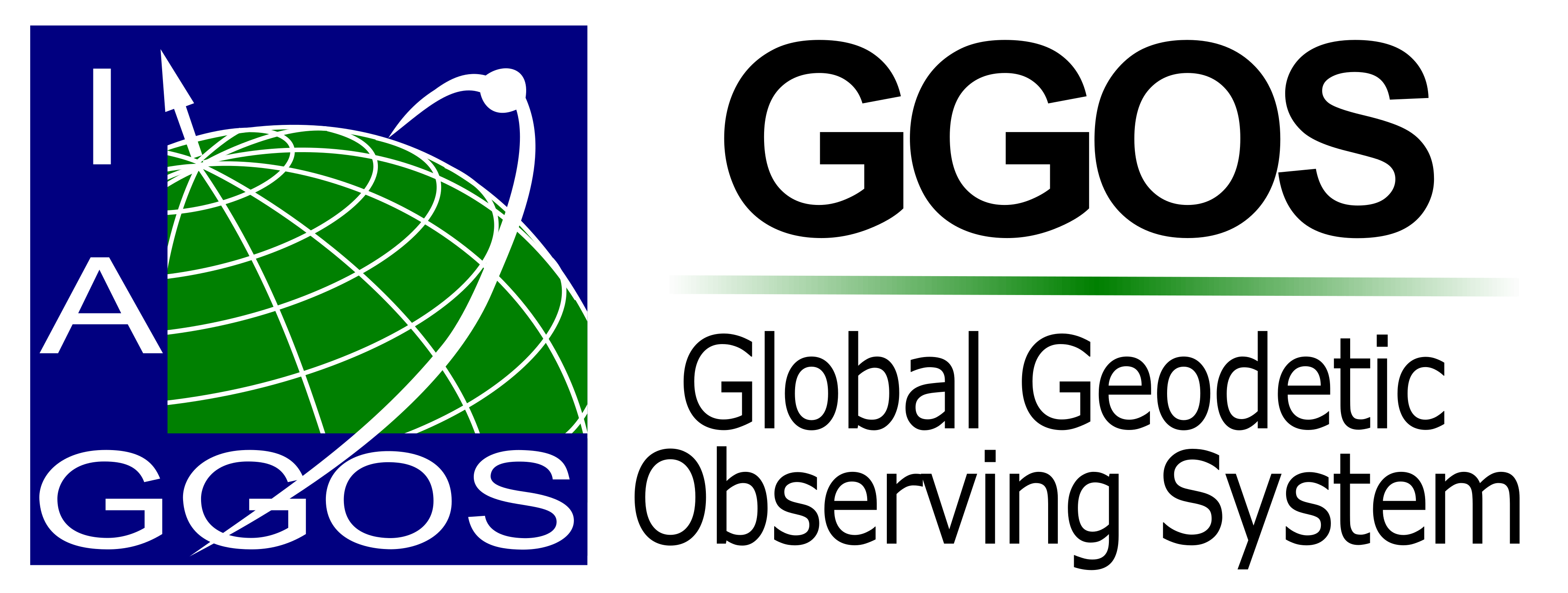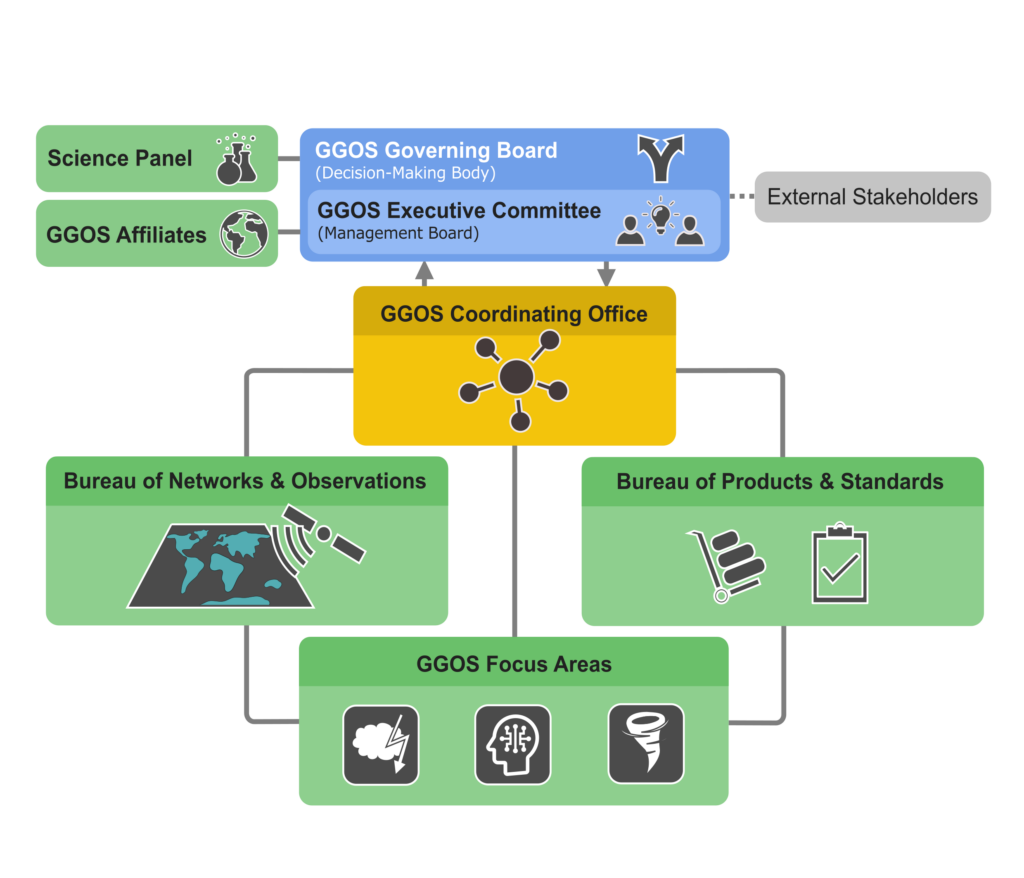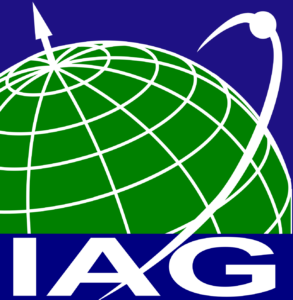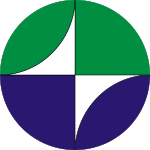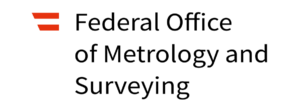GGOS Organisational Structure
When establishing the Observing System, the IAG installed an operational component to deal with the day-to-day business of implementing, maintaining and ensuring the long-term availability of the GGOS. This organizational structure serves as a clearinghouse for geodetic information expertise and acts as a central interface between science and society. The aim is nothing less than to bring together all relevant geodetic information describing the geometry, gravity field and rotation of the Earth, available in the form of observations, models and products, to combine and integrate them in a consistent manner, and to make them available to other sciences and to society.
The GGOS organization consists of the following structural elements:
GGOS Governance and Leadership
- GOS Governing Board – is the central oversight and decision-making body of GGOS.
- GGOS Executive Committee – serves at the direction of the Governing Board to accomplish day-to‐day activities of GGOS tasks.
GGOS Coordination
- GGOS Coordinating Office – coordinates the work within GGOS and supports the Chair, the Executive Committee and the Governing Board; and coordinates GGOS external relations.
GGOS Components
- GGOS Science Panel – advises and provides recommendations to the Governing Board relating to the scientific content of the GGOS 2020 book and its updates; and represents the geodetic and geoscience community at GGOS meetings.
- GGOS Bureau of Networks and Observations – develops a strategy to design, integrate and maintain the fundamental geodetic infrastructure including communication and data flow; monitors the status of the networks and advocates for implementation of core and other co-located network sites and improved network performance.
- GGOS Bureau of Products and Standards – tracks, reviews, examines, evaluates all actual standards, constants, resolutions and products adopted by IAG or its components and recommends their further use or proposes the necessary updates.
- GGOS Committees, Working Groups and Focus Areas (formerly known as Themes) – address overarching issues common to several or all IAG components, and are a mechanism to bring the various activities of the Services, Commissions and Inter-Commission Committees together, or to link GGOS to external organizations. Focus Areas are cross-disciplinary and address specific focus areas where GGOS contributors work together to address broader and critical issues.
- GGOS Affiliates – are national or regional organizations that coordinate geodetic activities in that country or region. GGOS Affiliates allow increased participation in GGOS, especially by organizations in under-represented areas of Africa, Asia-Pacific, and South and Central America.
